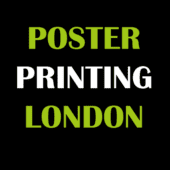Crafting an Effective Academic Poster: A Comprehensive Guide
Introduction: Academic posters are an essential tool for researchers to communicate their findings at conferences, symposiums, and other academic events. They provide a visual representation of research objectives, methodologies, results, and conclusions in a concise and engaging manner. Crafting an effective academic poster requires careful planning, attention to detail, and adherence to certain design principles. In this article, we will outline the key steps involved in creating an impactful academic poster and discuss strategies for maximizing its effectiveness.
Step 1: Define Your Objectives Before diving into the design process, it’s crucial to clearly define the objectives of your poster. What message do you want to convey? What are the key takeaways you want your audience to grasp? Identifying these objectives will guide your content selection and layout decisions.
Step 2: Organize Your Content Once you have a clear understanding of your objectives, organize your content into logical sections. Typically, academic posters include sections such as Introduction, Methods, Results, Discussion, and Conclusion. Ensure that each section flows logically and is presented in a coherent manner.
Step 3: Choose an Eye-Catching Design The visual appeal of your poster plays a significant role in attracting viewers’ attention. Choose a clean and professional design that complements your content. Use a consistent color scheme, legible fonts, and ample white space to enhance readability. Incorporate visuals such as graphs, charts, and images to illustrate key points and break up text.
Step 4: Craft Engaging Headings and Text Capture viewers’ interest with clear and concise headings that effectively communicate the content of each section. Keep text brief and to the point, using bullet points or short paragraphs to convey information efficiently. Avoid jargon and technical language that may be difficult for non-experts to understand.
Step 5: Balance Visuals and Text Strike a balance between visuals and text to maintain viewers’ interest and convey information effectively. Avoid overwhelming your audience with dense blocks of text or an excessive number of visuals. Instead, aim for a visually appealing layout that guides viewers through your poster in a cohesive manner.
Step 6: Proofread and Revise Before finalizing your poster, thoroughly proofread all text for spelling, grammar, and punctuation errors. Additionally, solicit feedback from colleagues or mentors to ensure clarity and coherence. Make any necessary revisions to improve the overall quality and effectiveness of your poster.
Conclusion: Creating an effective academic poster requires careful planning, attention to detail, and creative design skills. By following the steps outlined in this guide, researchers can craft posters that effectively communicate their findings and engage viewers at academic events. Remember to define clear objectives, organize content logically, choose an eye-catching design, craft engaging headings and text, balance visuals and text effectively, and proofread and revise meticulously. By incorporating these strategies, researchers can maximize the impact of their academic posters and effectively disseminate their research to a broader audience.
